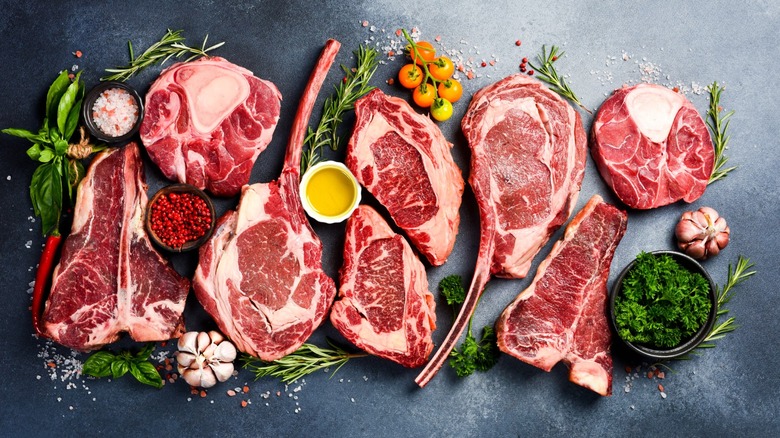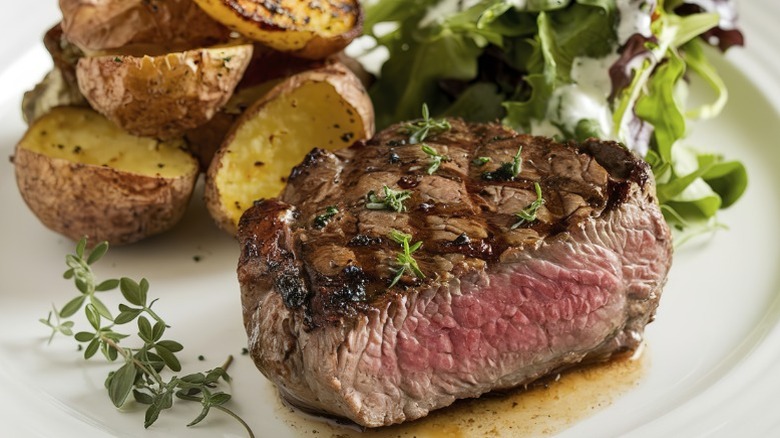Cutting Your Own Steaks Can Save You Money – Here's What To Know Before Attempting It
Butchering steaks at home is probably not for the faint of heart. However, it can lead to long-term cost savings for those brave enough to try it. To find out more, and learn how to do it like a pro, we spoke to Jessica Randhawa — a chef, photographer, recipe creator, and writer behind The Forked Spoon.
"Cutting your own steaks at home can save you money if you're willing to purchase larger primal cuts of whole roasts in bulk, as these are generally priced lower per pound than individually cut steaks," Randhawa told The Takeout. Cutting the meat at home allows you to customize the thickness to your liking, as well as ensuring you're getting budget-friendly steak cuts which are significantly less expensive than buying them individually.
Randhawa advised that watching instructional online tutorials can help make butchering at home less daunting if you're nervous. "There's definitely a learning curve involved when cutting your own steaks, and it's possible to accidentally ruin a cut if you're unfamiliar with the anatomy of meat," she said. "Incorrect slicing can lead to uneven steaks, tougher meat, or excess waste." With practice, however, "it becomes relatively straightforward." Once you've cut your steaks, you can portion them into freezer bags, and they'll keep for a couple of months in the freezer until you're ready to use them. You can even cook steak from frozen to make things easier.
How to cut steaks yourself at home
To butcher steaks at home, you'll need to have everything in place before you start. "Upfront costs typically include the price of the meat itself, which varies depending on quality and sourcing," said Jessica Randhawa. "You'll need to invest in good-quality knives (such as a boning knife and a chef's knife), a large cutting board, sharpening tools, and possibly vacuum-sealing equipment for proper meat storage." She estimates that the initial cost for equipment is between $100 and $200.
After securing quality tools and your choice of meat, find a sanitary place to cut and package the steaks. "To properly butcher a larger slab or primal cut at home, you'll need a spacious countertop or table that's easy to clean and disinfect," Randhawa explained. "Ideally, you'd have a designated prep area separate from everyday meal prep due to space and mess involved." However, if you're only butchering a single roast into steaks, a standard kitchen setup is fine.
Once you're ready, carefully cut the steaks. Dry the meat and surface first, and mark where you're going to make cuts with your knife tip to keep them even. You should cut the meat across the grain, and use one downward stroke without sawing. When you're done, properly sanitize the countertops, cutting boards, and knives, especially if you end up butchering steaks where you do other daily meal prep.
If you decide butchering steaks isn't quite for you, there are other ways to save. "Alternative cost-saving measures including buying steaks in family-sized packs on sale or shopping wholesale clubs — which offer significant savings without requiring DIY butchery," Randhawa suggested.

